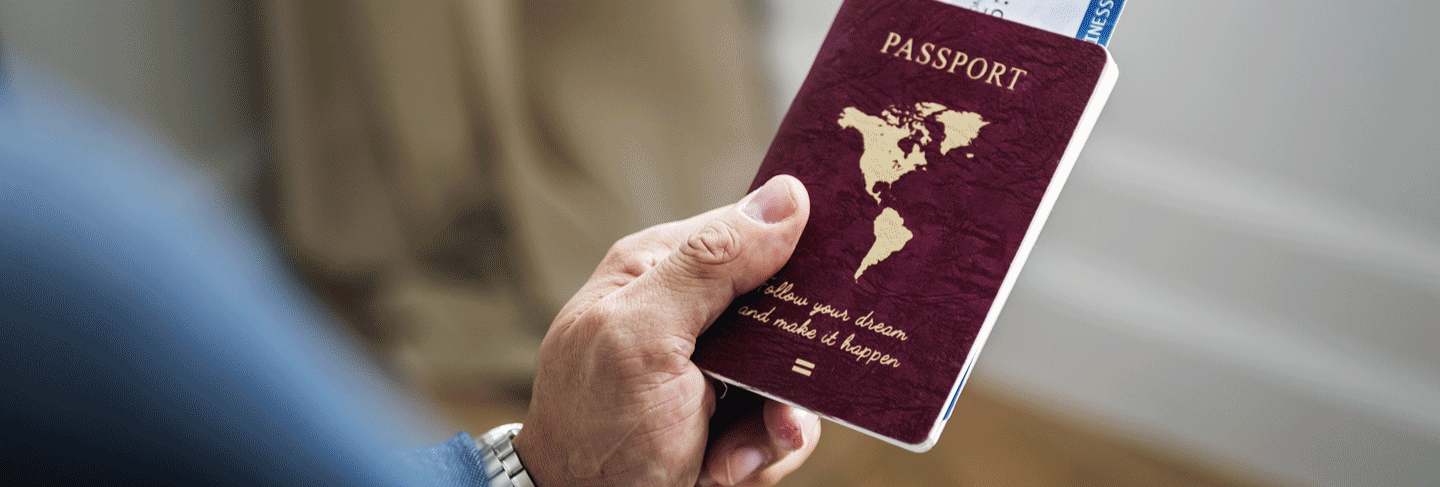What is a Visa ?
By support@click2visas.com
6 years
A visa is an official document or permission given by a country that allows the bearer to visit that country. Usually, the visa is stamped or glued into the individual’s passport. Many countries demand a visa to gain entry into their territory, and the visa is only good for a specified period of time. In many cases, while it is necessary for entry into the country, it does not automatically guarantee entry.

What are the major categories of Visa?
Based on duration of stay and the process involved in acquiring a visa, we categorize them into two types: long-term visas and short-term visas.
Long-Term Visa
The long-term visas are offered by the embassy of the destination country and allows the traveller to stay for a period longer than 6 months, depending upon the rules laid out by the issuing authority. The visa process is also a prolonged process which can involve a medical test conducted by the destination country, language exam, financial background verification, and validation of eligibility of the applicant. The long term visa includes things like the work visa, student visa or dependent visa.
Short-Term Visa
Generally, the short-term visa allows the traveller to enter the country for a period of 6 months to 10 years, with a restriction that the traveller can’t stay for more than a maximum of 6 months during a single visit. It allows the bearer to engage in leisure and minor commerce activities, but in general it precludes employment. The applicant’s profile will also enable him/her to enter multiple times with into the country using a single visa stamping. The most common short term visas are tourist visas, business visas and transit visas.
What are different types of Short-term Visas?
There are different types of short-term visas, the most popular of which are tourist, transit, business visas, and diplomatic visas.
Tourist Visa: This visa is valid for a limited period of time, usually more than a week, and it allows the traveler to visit the country for tourism or other non-business leisure travel.
Business Visa: This is a non-immigrant visa, which allows the traveler to engage in commerce-related activities like attending business conferences, conventions, meetings, and other business-related events in the country.
Transit Visa: This is valid for a minimum number of days, usually less than a week. It allows the bearer to spend a few days in the country before moving to another destination.
Diplomatic Visa: This visa will be issued only to diplomatic passport holders who will solely engage in official duties or activities on behalf of their national government.
Issue methodology
Paper Visa
The paper visa is a legacy way of issuing a visa where the applicants will apply for a visa at the consulate or embassy and submit their passport, which will be collected later with the visa stamped in it. The visa-issuing country only allows select nationalities to undergo the paper visa process, which also enables the traveler to possess a visa with a maximum expiry date. In a few scenarios, the applicant will need to schedule an appointment with the visa-issuing center or authority where the original document will be verified and they may undergo a biometric information gathering process.
Electronic Visa
This is the more advanced way to acquire a visa, where the visitor will apply for the electronic visa (or e-Visa) via an online platform and receives the receipt, which can be either stored on an electronic device or printed on paper. Many countries only allow a few nationals to access the e-Visa. Usually, the e-Visa will be linked to the passport number of the applicant. Hence no stamp will be available on passport before landing in the port of entry in the destination country.
Visa on Arrival
The permission-on-arrival visa will be granted to the visitor at the port of entry of the destination country before proceeding to the immigration control. The visitor is not required to apply for a travel visa beforehand. But this type of visa-on-arrival requires certain documents and photos of the applicant, in a specified format, at the port of entry.
How to determine which type of visa you need
To determine which type of visa an applicant will want to apply for, the applicant will need to understand their purpose of visit. Aside from the information listed above, here is some additional information that may help in choosing which visa you need:
The common purposes for a tourist visa are non-professional; recreational; leisure; vacationing; cruising; sightseeing; tourism; visiting family, relatives and friends; touring; casual visit; short-term yoga programs; holidaying; excursions; short-term courses on local languages, music, dance, arts & crafts, cooking, medicine, etc.; voluntary work of short duration, etc.
Likewise, the common purposes for the business visa are commercial; business activities; coaching trainer; industrial/business venture; international workshops/conference; official; sale/purchase/trade; technical/business meetings to recruit workforce, participate in exhibitions, or business/trade fairs; acting as an expert/specialist in connection with an ongoing project; and conducting tours.
We have also listed a few visa types for references like Austalia ETA visa, GCC Visitor EVisa, Visit Single Entry 2 Weeks, E-VOA Business, E-Immigration Card, 26M Tourist Visit Visa, Invitation Letter Double Entry, E- Tourist card, which will be elaborated in the upcoming blog posts.




